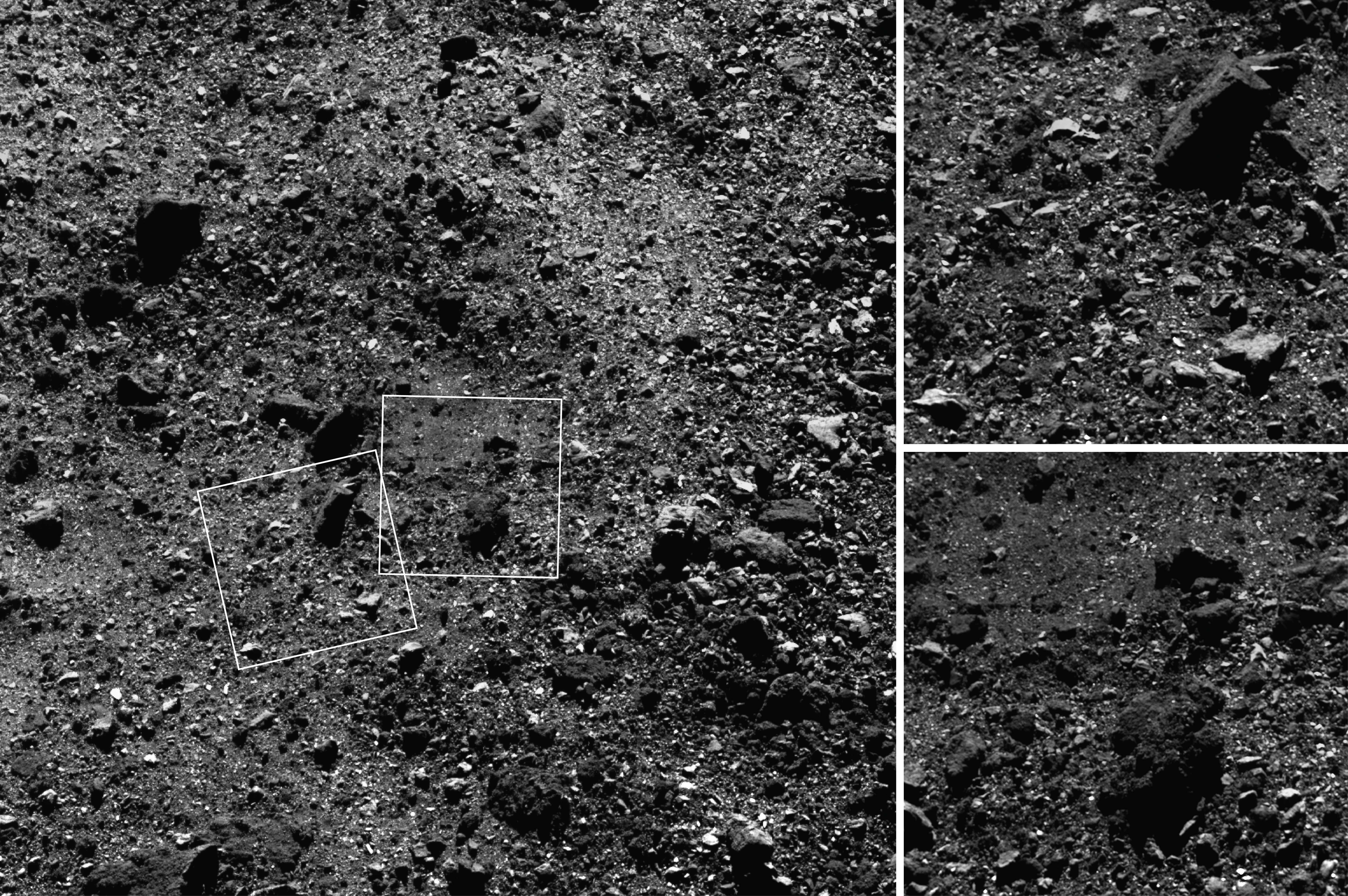UPDATE: On Sept. 24, 2023, NASA's OSIRIS-REx successfully delivered samples collected from the asteroid Bennu to Earth, landing in a targeted area of the Department of Defense’s Utah Test and Training Range near Salt Lake City. Aerospace congratulates the OSIRIS-REx team and all those who contributed to this significant achievement for space science and engineering.
Asteroid sampling stands to divulge a wealth of scientific information regarding the natural world, and its increasing feasibility may portend a new era of industry and commercial possibilities. Recently, NASA collected a sample from one of the estimated 1 million asteroids in our solar system. The Origins, Spectral Interpretation, Resource Identification, Security, Regolith Explorer (OSIRIS-REx) mission was NASA’s first mission of this type, and The Aerospace Corporation provided crucial technical expertise and analytical insight to ensure its success.
The target of the OSIRIS-REx mission was a 4.5 billion year-old, near-Earth object named Bennu, an ancient carbonaceous asteroid that may offer scientists a wealth of insight into the makings of the early solar system and the ingredients that may have contributed to the origins of life on Earth billions of years ago. Bennu is also one of the most potentially hazardous asteroids, as it has a relatively high probability of impacting the Earth late in the 22nd century. While the OSIRIS-REx mission stands to play a critical role in determining what the 492-meter-wide Bennu is made of, it also stands to shed light on what it would take to be deflected or destroyed if it, or other asteroids, were to threaten Earth.

Preparing for Contact
At the planning level, the OSIRIS-REx mission underwent rigorous testing and analysis, explained Dr. Dolan Highsmith, Senior Project Engineer at Aerospace. The intense technical scrutiny by the team proved invaluable as demonstrated by the mission’s on-going success in meeting its objectives thus far.
“The sampling attempt was definitely a surprise in terms of how well it worked,” Highsmith said. “I think that’s a testament to all the teams that participated in this, from the design of the sampling cannister to the sampling arm and the flight dynamics, and the on-board navigation.”
For his contribution, Highsmith received NASA’s Exceptional Engineering Achievement Medal for his leadership during the planning and execution of OSIRIS-REx’s survey and reconnaissance campaigns.
Launched in 2016, the complex mission required careful coordination between the project’s Flight Dynamics System team, spacecraft operations, science planning and project management. Highsmith was embedded as a member of the OSIRIS-REx flight dynamics team, serving as the Mission Phase Lead for some of the most challenging operations activities ever executed by a robotic spacecraft for the OSIRIS-REx survey and reconnaissance campaigns.
One Mission, Multiple Objectives
On Oct. 20, the OSIRIS-REx spacecraft successfully collected dust and pebbles from the surface of Bennu for delivery to Earth in 2023. The OSIRIS-REx mission’s other key science objectives include mapping the asteroid, documenting the sample site, and returning a sample of Bennu’s surface for analysis on Earth. While the mission is also tasked with measuring the orbit deviation caused by non-gravitational forces (i.e., the Yarkovsky effect), it will also shed light on the accuracy of our ground-based observations of Bennu by comparing them to data collected by the spacecraft in-situ.
Although not all of OSIRIS-REx’s objectives have been completed yet, performance of its primary objective may have exceeded expectations. While the mission’s goal was to collect at least 60 grams (2.1 ounces) of material from Bennu’s surface, images from the spacecraft show that OSIRIS-REx likely grabbed up to 400 grams (14.1 ounces) of material, and some of the rocks were so big that they temporarily prevented the spacecraft from sealing the sampling cannister shut. While this did lead to the loss of a small amount of material (and significant media coverage), the issue was ultimately resolved and material was properly contained.
What’s Next for OSIRIS-REx
OSIRIS-REx is now on standby near Bennu until March of 2021, at which time it will commence its long voyage home to the Utah Test and Training Range in 2023. With the sample collection portion of the OSIRIS-REx mission now complete, Aerospace will serve in a support and oversight capacity to the mission for the next three years, at which time Highsmith expects to resume his involvement in the months before the spacecraft’s return. Aerospace will also remain involved in other NASA/Goddard Science Mission operations by assisting with tasks and analyses for other space science operations during this time.

While the OSIRIS-REx project stands to answer long-standing questions that are central to the human experience, it may also yield insight into more immediate concerns, such as the feasibility of accessing resources critical to human existence that are abundant in space. When pressed on whether the OSIRIS-REx mission’s success could pave the way for practical space mining operations, Highsmith opines that the mission could help identify good or bad candidates for mining interests, while also proving that the challenges of remotely navigating to and around asteroids and other small bodies are not insurmountable.
Although the total success of the OSIRIS-REx mission hinges upon the successful retrieval of the sampling cannister in three years, the breakthrough nature of the mission is uncontested and will invariably lead to new and even more ambitious endeavors.
“In terms of operations and implementing the development of a shape model and the landmarks that go with it,” Highsmith said, “putting all of the pieces (of the mission) together in the way that we had to pull off this mission was groundbreaking, and a model to follow for future missions.”

